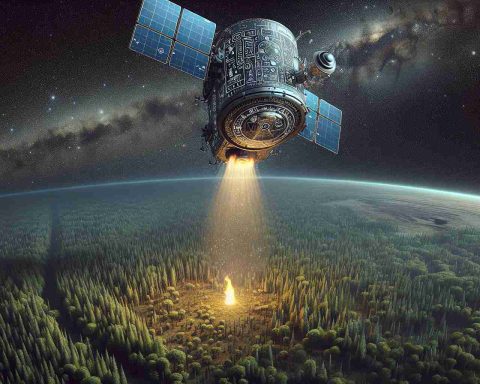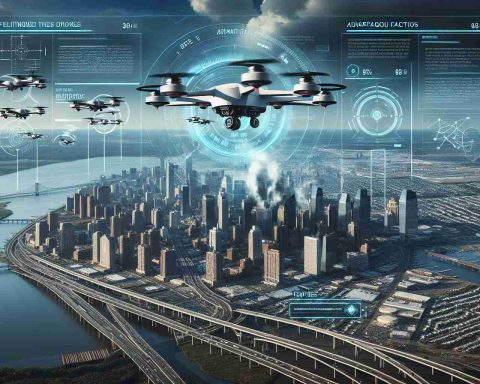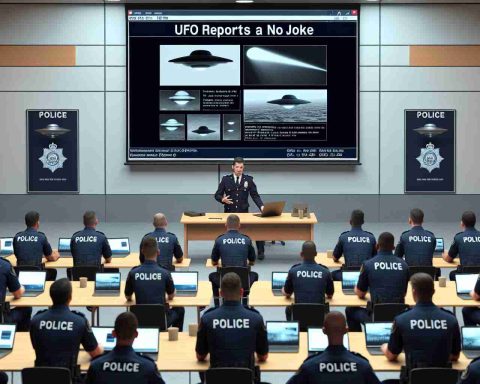Groundbreaking Solutions for Wildfire Monitoring
As Los Angeles grapples with the aftermath of devastating wildfires, experts are optimistic about technological advancements in satellite monitoring that could reshape fire management. Scientists are launching a fleet of new satellites designed to harness machine learning and sophisticated sensors, aiming to enhance the understanding of wildfire risks in increasingly vulnerable areas.
These satellites will provide critical data by identifying dry regions susceptible to fires, as well as monitoring active flames, smoldering hotspots, and smoke emissions. Different satellite types serve distinct purposes; for instance, low Earth orbit (LEO) satellites capture high-resolution images but have limited observation time, while geostationary satellites continuously monitor the same area but at lower resolutions.
Addressing the urgent need for more precise fire tracking, specialists from organizations like Earth Fire Alliance (EFA) are developing a satellite constellation that boasts exceptionally fine resolution. This will reveal previously undetected small fires, offering vital insights into wildfire dynamics.
Moreover, innovative companies like Germany’s OroraTech are launching lightweight satellites that promise rapid wildfire alerts and thermal data. However, with vast amounts of data being generated—up to one terabyte daily from just one satellite—extracting meaningful insights presents significant challenges.
Ultimately, experts emphasize the importance of combining various technologies and community resilience strategies to effectively combat the growing threat of wildfires, reinforcing that a holistic approach is essential for changing fire management paradigms.
The Broader Impacts of Advancements in Wildfire Monitoring
The introduction of sophisticated satellite systems for wildfire monitoring represents a significant leap not only in fire management but also in how society approaches environmental challenges. As wildfires become more frequent and severe due to climate change, the implications of these technological advancements extend far beyond immediate fire response strategies.
Culturally, there is a shift towards a collective awareness of fire risks in vulnerable populations. With real-time data at their fingertips, communities can adopt proactive measures, enhancing local preparedness and encouraging a more resilient mindset. This fosters a culture of vigilance where individuals become active participants in monitoring and reporting potential fire hazards.
Economically, the financial repercussions of wildfires are staggering. In 2020 alone, wildfires in the United States caused about $16 billion in damage. By leveraging advanced monitoring technologies, businesses and governments can better allocate resources for emergency response and recovery, ultimately saving costs in the long run.
In terms of environmental effects, improved monitoring can lead to more effective land management practices. By understanding the conditions that lead to wildfires, strategies can be developed to mitigate these risks, protecting ecosystems as well as human settlements.
Looking to the future, we can expect a trend towards integration; combining satellite data with ground-level insights and community engagement could foster a more robust and adaptive fire management paradigm. As technology evolves, so too does our ability to confront and navigate the complexities of living in an increasingly fire-prone world.
Revolutionizing Wildfire Management: Advanced Satellite Solutions for Fire Detection
Groundbreaking Solutions for Wildfire Monitoring
As wildfires continue to devastate regions like Los Angeles, the urgency for advanced monitoring technologies has never been more pressing. New satellite systems are emerging, equipped with cutting-edge machine learning techniques and sophisticated sensors aimed at transforming wildfire management. This article explores the latest innovations in satellite monitoring, their features, use cases, and the future landscape of fire management.
# Features of the New Satellite Systems
The new satellite technology includes a range of features designed to enhance wildfire detection and monitoring:
– High-Resolution Imaging: Low Earth Orbit (LEO) satellites offer high-resolution imagery for precise assessments, crucial for identifying small fires before they escalate.
– Continuous Monitoring: Geostationary satellites provide constant surveillance of a particular area, allowing for ongoing assessment of environmental conditions.
– Real-Time Data Processing: Advanced data analytics using machine learning enable quicker response times by processing images and patterns in near real-time.
# Use Cases in Wildfire Management
The application of these satellite technologies extends beyond just detection:
1. Risk Assessment: By identifying dry regions and potential fire hazards, authorities can implement more effective preventative measures.
2. Active Fire Monitoring: These satellites track active fire behavior and spread, providing critical information for firefighting efforts.
3. Smoke Emissions Tracking: Monitoring smoke can offer insights into air quality and health risks for communities affected by wildfires.
# Pros and Cons of Satellite Monitoring for Wildfires
Pros:
– Improved Detection Speed: Satellites provide early warning capabilities, enabling quicker evacuations and resource allocation.
– Comprehensive Coverage: Satellites can monitor vast areas that are otherwise inaccessible.
– Data Integration: Combining satellite data with local sensor networks can create a complete picture of fire dynamics.
Cons:
– Data Overload: With the potential of generating enormous amounts of data—from one satellite alone—there is a significant challenge in data management and analysis.
– Dependence on Technology: Relying heavily on satellite data may lead to gaps in local knowledge and on-ground intelligence.
# Current Trends in Satellite Monitoring Technologies
Innovative companies, such as Germany’s OroraTech, are developing specialized small satellites designed for rapid deployment and thermal data collection. This shift indicates a trend towards lighter, more agile satellite systems that can be launched and operated at lower costs, thus making wildfire monitoring more accessible for various regions.
# Market Analysis and Future Predictions
The market for satellite technology in wildfire management is expected to grow significantly. As countries face increasingly frequent and severe wildfires, investment in these advanced technologies is likely to increase. Predictive modeling coupled with improved monitoring capabilities holds the potential to revolutionize fire management strategies globally, with experts suggesting that integrated approaches will become essential.
# Sustainability and Security Aspects
As wildfire monitoring technology advances, sustainability practices must also improve. The impact of satellite manufacturing and launches on the environment will come under scrutiny. Additionally, security measures will need to ensure that data collected is protected and used ethically, particularly as it can reveal vulnerabilities in critical infrastructure.
# Conclusion
With technological innovations in satellite monitoring, there is renewed hope for more effective wildfire management strategies. The collaboration of various technological resources along with community resilience strategies will be vital in mitigating the growing threat of wildfires. Organizations and policymakers must prioritize these advancements to foster safer, resilient communities in the face of environmental challenges.
For more information on technology advancements and wildfire management strategies, visit Wildfire World.




















